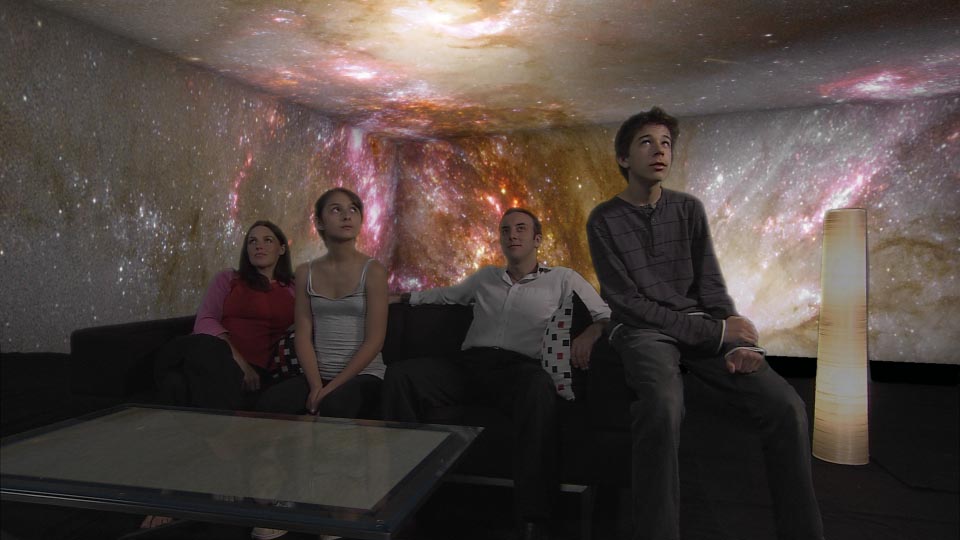Cracking the Colour Code
A visual exploration investigating how we view colours how we make them and the meanings they hold in our world taking the globe as its canvas drawing on science, history, art and more.
3 x 1 hour documentary series in co-production with Gedeon Programmes (France) for SBS, ARTE, S4C, AVRO, Planete, RTBF, Tele-Quebec, TV Ontario, TV5 Monde and YLE Teema
Awards and nominations:
Winner 2009 AFI Award Best Cinematography in a Documentary
Nominee 2009 AFI Award Best Editing in a Documentary
An unprecedented global journey to explore the frontiers of how we view colour, make colour and use the power of colour to communicate meaning.
Colour is a fundamental part of our world. Landscapes, animals, fashion, painting, movies, food - everything around us resonates with the language of colour. All our waking lives - and even in our dreams - we navigate our way through a world of colour. Yet, whoever we are, colour has the power to stop us in our tracks - and to make us wonder.
Why is the sky blue? Why do leaves turn yellow in autumn? And why does red play so powerful a role in so many cultures? Is colour real or is it just a construct of our brains?
Drawing on the latest scientific findings and technology, Cracking the Colour Code is a series for people who are seeking answers to many of the questions that relate to colour and who, at the same time, wish to enjoy the incredible diversity and sensation that colour has to offer in our world.
While colour is a child of science and physics, it triggers within us a host of emotional, intuitive and intellectual responses - deeply rooted within ourselves and our culture. The series is both food for the intellect and the senses - delivered as a carefully arranged and orchestrated feast, yet one that is playful and provocative.
Based on three years of extensive research, Cracking the Colour Code draws on a range of disciplines and leading experts - including physicists, neurologists, artists, ethnologists, colour consultants, historians, artisans and marketing executives - each in some way intimately concerned with the nature and power of colour. Each offers insights - even new discoveries - that will challenge our understanding of colour.
From the stunning capabilities of the eye and brain to the story of how we've come to view the world as we do; from ancient ochre cave paintings to mimicking the iridescence of butterfly wings; and from India's holi festival to one of the world's leading colour forecasters, Cracking the Colour Code takes you on three unique journeys, making for spectacular, ground breaking television.
EPISODE 1
The central focus of this episode is the nature of colour. It draws on the latest science to find out how - and why - humans and other living things view the world in colour. For those of us who can see colour, it is fundamental to our existence. The question is where does this mysterious force originate and do we all see colour the same way?
EPISODE 2
Colour is fundamental to expressing who we are and our place in the world. From our most ancient cultures to our contemporary world, we use colour for cultural and spiritual self-expression. The development of new colours and new uses for colour is intimately linked to technological innovation, expanding trade, and the power of empires. In this episode we explore the worlds of anthropology, art, and science to discover how and why new colours and palettes emerged over the history of human kind.
EPISODE 3
In this episode we look at the fascinating power of colour from ancient ritualistic uses of colour through to its use of modern marketeers. Along the way we delve into the work of anthropologists, scientists and designers to explore what is myth and what is truth about the power of colour. How much is known about the hold colour has on us? How does colour affect us emotionally, physically and mentally?
Phimedia created visual effects for both the French and Australian versions. These included a virtual living room with walls that turned into video screens, complex animations of the optic nerve and visualisation of the elctromagnetic spectrum.
Year: 2008
Client: Electric Pictures / Gedeon
Editor: Lawrie Silvestrin
Producer: Andrew Ogilvie
Director: Hugh Piper
IMDB: https://www.imdb.com/title/tt1254807/
